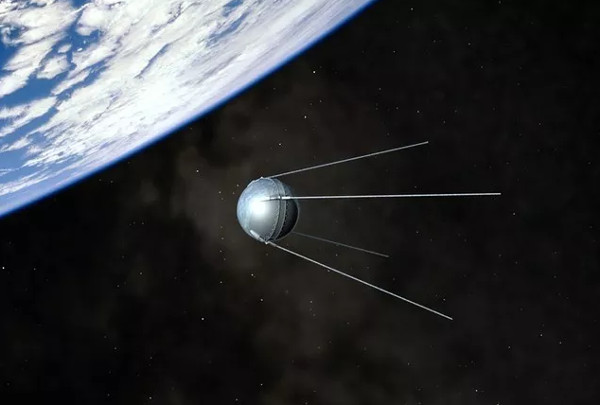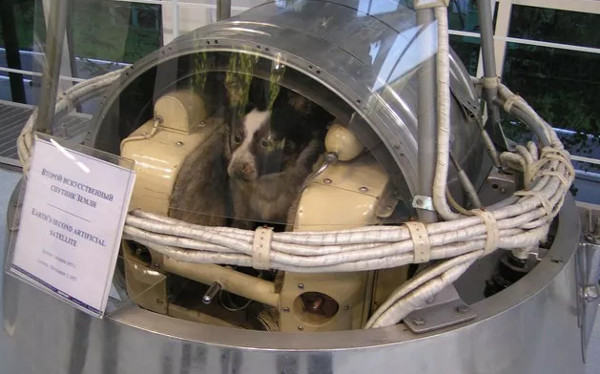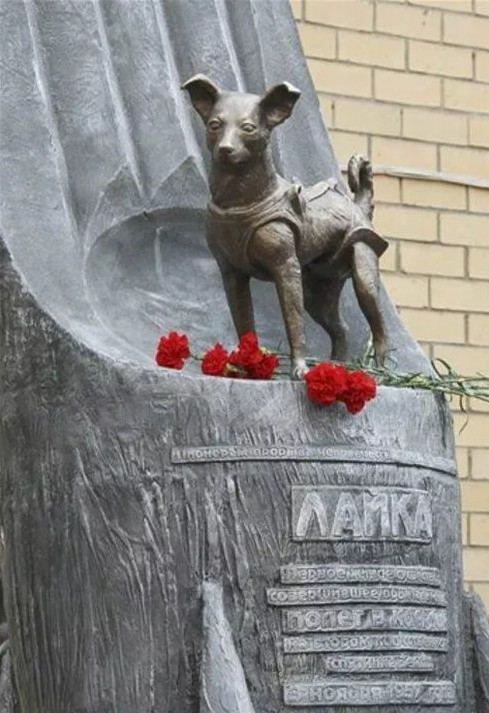The story of one of mankind’s most extraordinary “astronauts”.
The story of the dog Laika – the first dog to fly in space
After the success of Sputnik 1, Soviet leader Nikita Sergeyevich Khrushchev intended to launch another Sputnik on November 7, 1957 to commemorate the 40th anniversary of the October Revolution. A complex satellite is built, but it will not be ready until December 1957, which will later become Sputnik 3.

The Soviet rocket engineer had planned to prepare an orbital flight for the dog long before humans; Since 1951 they have bred and trained 12 assistance dogs for short-term ballistic orbital flights in space, this training is gradually approaching the objective of an orbital flight actually for dogs around 1958. With the aim To meet Nikita Sergeyevich Khrushchev’s request, the flight to put the trained dogs into orbit was hastily prepared for launch in November.
According to Russian sources, the official decision on the launch and launch of Sputnik 2 was made on October 10 or 12, made by the design team of Sergei Korolev, the founder of the Soviet space program written, with only 4 weeks to design and build the ship, a difficult and urgent task. This is why Sputnik 2 was built in a hurry, most of the elements of the spaceship were built on rough sketches. In addition to the main mission of sending humans into space, Sputnik 2 also carries equipment to measure solar radiation and cosmic radiation.
Sputnik 2 is equipped with a life support system that includes an oxygen generator and devices to prevent oxygen poisoning and absorb CO2. A fan is designed to run whenever the temperature in the cabin exceeds 15 degrees Celsius, this fan is added in the vessel to keep the dog’s temperature cool. The ship is also equipped with enough food (in paste form) to allow for a seven-day flight in space, and the dog is also equipped with a specialized bag for storing trash and waste.
Previously, with the aim of sending people into space, Soviet scientists studied and after careful consideration, dogs were considered the most suitable test subject because they have a similar survival capacity to humans. And immediately, a team of “astronaut” dogs was secretly formed. By design, Sputnik-2 has a total weight of 508.3 kg, the ship’s cockpit is equipped with sensors used to measure the pressure and temperature of the environment, as well as blood pressure, heart rate, respiratory rate of the astronaut.
It was also a coincidence that Laika became an astronaut. After being captured by the wildlife collection team, it is not known whether Laika possesses the necessary qualities of an “astronaut” that scientists choose for her. This is how Laïka, 3 years old, weighing 16 kg suddenly became one of the three secret “Soviet cosmonauts”: Laïka, Albina and Mushka.
Laika’s real name is Kudryavka (Little Curly). But because this name is a bit difficult to pronounce, Soviet scientists called it Laika (Barker), because in the Soviet Union the Eskimo breed was often called Laika. To become a true astronaut, Laika and other “colleagues” had to undergo rigorous testing and training. In order to get used to living in the cramped cockpit of Sputnik-2, the dogs were kept in cramped cages continuously for 15-20 days. They also need to get used to wearing special clothes and learn to use canned foods in liquid form. To get used to the strong vibrations and roar of jet engines, they must regularly train with centrifuges that simulate rocket acceleration, as well as weightlessness simulators. After each exercise, their heart rate doubled.
At the end of the internship, the bitch Albina was transferred to the living body endurance test unit under conditions of extreme acceleration during the launch of the booster rocket; The Mushka dog was transferred to the [Spacecraft Landing and Rescue Equipment Testing Department. Laika alone is used to study the endurance of living organisms under conditions of weightlessness. And it was this mission that helped Laika become the first living being to fly in space. Right before the launch, Laika was washed with an alcohol-based solution, her fur was carefully groomed, and iodine was applied to places where sensors were installed to monitor bodily functions and was taken into the cockpit of Sputnik-2. All are ready.
On November 3, 1957, at the Baikonur Cosmodrome, Sputnik 2 was launched into Earth orbit, carrying Laika away. According to the signals received from the sensors mounted on the hull, when launching the ship, Laika’s heart rate increased 3 times compared to normal. After the ship reached weightlessness, Laika’s heart rate began to drop again. On the same day, Radio Moscow broadcast information that signals from Sputnik 2 showing the operation of scientific instruments were still proceeding normally and that Laika was still alive. Six days later, Earth completely lost contact with Sputnik-2. Information provided by the Soviet Space Agency at the time showed that Laika lived until the fourth day of the trip.
Shortly after the launch of Sputnik 2, Soviet scientists had to admit that due to incomplete landing gear, Sputnik 2 was determined to conduct a suicide test flight, with no return. In addition, the amount of food and oxygen is only enough for Laika to last 10 days, while the mission of Sputnik-2 will last until April 1958. This means that the fate of Laika was decided on. initially, it would die and be burned along with the ship when it re-entered Earth’s atmosphere. After 163 consecutive days of flying 2,570 circles around Earth’s orbit at the closest point at 225 km and furthest away at 1,671 km at a speed of 28,968 km / h, on April 14, 1958, Sputnik 2 was carrying Laika’s body burning in the sky on her way back to Earth, successfully completing her pioneering mission.

It wasn’t until late October 2002, exactly 45 years after Laika launched into space, at the World Aerospace Conference in the United States, that the truth about Laika’s death was revealed. Dr Dimitry Malashenkov’s report from the Moscow Institute for Research on Biological Problems helped end decades-long speculation about Laika’s death. As a result, sensors mounted on Laika’s body recorded that just after the cockpit reached a speed of nearly 28,968 km / h, Laika’s heart rate increased three times normal due to the heat, fear and stress. As to the cause of Laika’s death, scientists at the Institute of Biological Problems agree that Laika died due to excessive panic when Sputnik 2 was in zero gravity and system malfunction. tolerance of the living body.
While there is no chance of coming back alive, Laika’s sacrifice was not in vain as it proved one thing: living things can exist weightless in space. Laika’s flight paved the way for manned launch preparations soon after, and provided scientists with the first data on how living things react in the space environment.
 On April 11, 2008, exactly 50 years after Laika’s body was cremated in the Earth’s atmosphere, at the Petrovsko Military Medical Institute – Razumovsky Boulevard in Moscow, where Laika trained to prepare for tests in the space, the Russians erected a monument to Laika. designed by sculptor Pavel Medvedev. The base of the monument simulates a space rocket, the upper part of the engines simulates a human hand. Statue of Laika standing on it, in the human palm.
On April 11, 2008, exactly 50 years after Laika’s body was cremated in the Earth’s atmosphere, at the Petrovsko Military Medical Institute – Razumovsky Boulevard in Moscow, where Laika trained to prepare for tests in the space, the Russians erected a monument to Laika. designed by sculptor Pavel Medvedev. The base of the monument simulates a space rocket, the upper part of the engines simulates a human hand. Statue of Laika standing on it, in the human palm.


